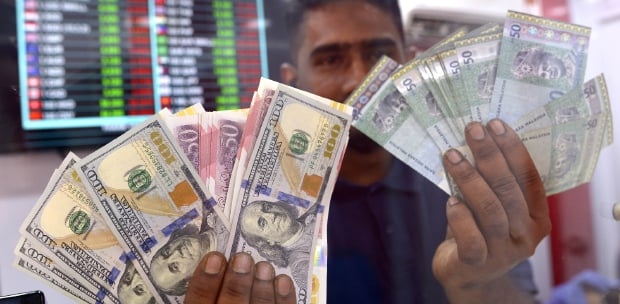KUALA LUMPUR: The ringgit continues to weaken, closing 1.1 per cent month-on-month (m-o-m) lower at RM4.689 in September on the stronger US dollar, although not as sharp as most regional currencies.
But analysts at MIDF Research are confident that the ringgit will end the year at RM4.30.
"We remained optimistic for the ringgit to appreciate in the fourth quarter of 2023. Taking into account the recent weakness and the US Federal Reserve's delayed pause, we maintain our forecast for the ringgit average to RM4.48 per dollar and year-end at RM4.30," the firm said today.
MIDF Research expects emerging markets' (EM) currencies, including the ringgit, to benefit from reversing fund flows into riskier markets once the appeal for the safety of the US dollar subsides.
Fundamentally, economic conditions remain supportive of the ringgit as the domestic economy stays resilient.
On a monthly average, the ringgit
depreciated 1.5 per cent m-o-m to RM4.682.
The ringgit even reached its weakest level on Sept 27 at RM4.708,
aligned with the dollar strengthening and it was the lowest level since early November 2022.
"The depreciation of ringgit
reflected strong correlation with the stronger dollar and therefore fluctuations in the financial market," MIDF Research said.
Despite better economic releases in China, the positive developments failed to provide support for the ringgit to rally.
For example, activities in China's manufacturing sector expanded as the NBS Manufacturing PMI rebounded to 50.2 in September 2023, ending the five-month contraction.
Similarly, China's services sector expanded further as NBS Non-
Manufacturing PMI rose to 51.7 (Aug-23: 51.0).
The movement in commodity prices also was also unable to support ringgit as Brent crude oil prices ended the month higher by 9.9 per cent m-o-m at US$95.43 per barrel.
On average, Brent crude oil prices rose 8.8 per cent m-o-m to US$92.59 per barrel.
"Despite the recent weakness, we maintained our projection for the ringgit to appreciate towards year-end as expectations for a hawkish Fed subside, which would lead to increased inflows into EM markets including Malaysia.
"Moreover, we expect ringgit to gain from better growth fundamentals such positive boost from faster pick-up in China's economic recovery," MIDF Research noted.





